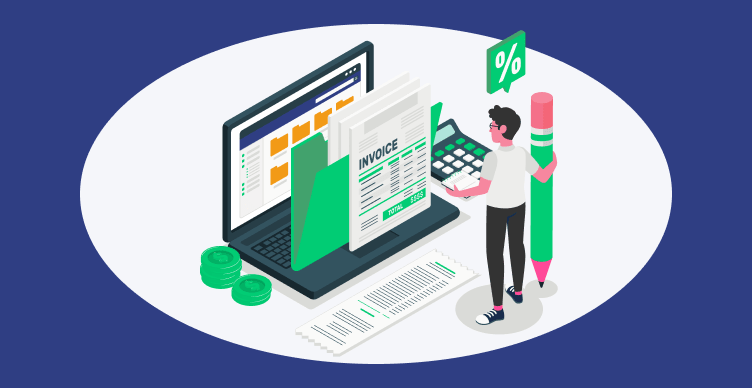As you look for potential rental property investment sites, the San Antonio metro area may have caught your attention. Now the question is, how feasible would such an investment be? If you were to strike a deal and acquire a property, would you be able to see the returns? Should you even strike that deal in the first place?
The South Central Texas city's housing market has several moves and trends you should know about as you make that decision. Thankfully, you've come to the right place. Below is a collection of all the relevant details that can assist you in making an informed decision.
San Antonio Housing Market Trends You Should Know
The San Antonio Board of Realtors (SABOR) indicated that the city saw a 30% decrease in home sales in January 2023, when compared to January 2022. This goes hand in hand with continuous increases in both the median and average home prices.
There's also been an increase in the number of days homes in the San Antonio area stay on the market. As far as the inventory goes, San Antonio currently has a 3.9-month supply.
Even with increases in the median price and average price, most homes managed to close for their original list prices.
What Factors Affect the San Antonio Housing Market?
From the median home price to home sales and beyond, the San Antonio real estate market is influenced by external factors. Here's a look at some of the major ones.
First, there are mortgage rates. Regardless of where you are in the United States, rising interest rates have been a reality. The Fed's strategy to battle inflation involves using higher rates, so this was inevitable. The current state of the rates is beyond anything seen over the past two decades and has left many potential home buyers simply priced out.
Next, there are demographics. You can create subgroups in the population in different ways. Age, income, and tax brackets are all examples. These groupings will typically have similar behaviors, which makes it feasible to anticipate certain trends and market moves. That's why when there are large demographic changes, the market can end up seeing long-term effects.
Government policies are also a part of the equation. Based on the decisions made by the government, the idea of buying a home can become more or less attractive than it would otherwise. Some of the specific policies include tax breaks, subsidies, and deductions.
The state of the economy is the final big one and it stands to reason. After all, there are factors such as GDP, income, cost of goods, manufacturing activity, and more. In some way, all of these will feed into purchasing power and opportunity cost, which will determine what the market looks like.
Will the Real Estate Market in San Antonio Crash?
Real estate investors know that there is always the risk of a market crash. However, some markets will show indicators that a crash is imminent, while others will show that such a phenomenon is way less likely. In any case, predicting a crash with any kind of certainty is next to impossible.
It's essential to think about inventory levels, interest rates, economic conditions, and more. As far as the San Antonio housing market goes, it has managed to remain pretty resilient and stable, even considering the challenges over the past few years.
By all indications, the expectation is for growth. Even so, as an investor, doing your due diligence is a must. Consider elements of the equation such as your goals, the health of the economy, and your financial situation before you buy into the market.
Investments are risky by nature, but at least you can maximize your chances of avoiding devastating losses by making more informed decisions.
The reality is the only way to find out for sure what will happen in the San Antonio housing market is to wait for time to tell.
Statistics from San Antonio's Housing Market
In 2022, there was a decline in building permits for single-family homes. April saw 1,357, while the number was only 478 by the end of the year. Unfortunately, things have stayed at the lower level ever since.
The San Antonio metro area saw a total of 1,507 permits for these homes approved from December 2022 to February 2o23.
Multifamily homes also saw a big change. In September 2022, the number was 1,414, which fell to 1,306 in December. Unfortunately, the number would only decline slowly since. Even so, the year as a whole saw a better performance here. December 2022 to February 2023 saw 3,393 approved in total, and this period only had 1,987 in the previous year.
Supply stands at 3.9 months, which is an improvement from the 1.5 months a year prior. The national mark is 2.6 months. While it's good that the city has hit this mark, there's still a deficit, since 6 months is the standard for a balanced market.
There's some volatility in the number of vacancies too. April 2022 had a vacancy rate of 10%. This fell to 7.2% by December, but went up by 0.6% again since then. For reference, the national average is 5.8%, so San Antonio's is notably higher.
Housing Market Forecast
The past year has shown steady growth in the San Antonio housing market. Average home values are at $286,195, which is an increase of 6.1% when compared to the previous year. Considering homes are taking 37 days to go to pending and the fact that there's a 0.985 sales ratio, things look fine.
Experts predict, however, that the market should cool over the next year. Buyers and investors are advised to look out for a drop in the sales percentage over the list price. Currently, the metric is 17.3%. Sales under the list price stand at 60.8%. Zillow's research indicates that the growth the market has seen should continue through 2024.
Home values are expected to fluctuate, but should see an increase overall. On the inventory side of things, there isn't much improvement expected.
Overall, the market shouldn't weaken in the coming period. Considering the market is hot right now, this is the time when investors are being encouraged to act.
What Makes San Antonio a Good Place to Invest?
As indicated before, the San Antonio housing market has performed well over the last few years despite the challenges that the country has faced. The economy is pretty strong, all things considered, which makes it a solid decision for real estate investment. Here are a few reasons:
- San Antonio is characterized by affordable housing options for both regular homebuyers and investors. Compared to other major Texas cities, median home prices are much better, meaning you can acquire a property for a much more favorable cost.
- The city is among the fastest-growing cities in the country. Looking at the decade 2010 to 2020, there has been a 16.5% spike in the population, which means there's a high demand for housing. Of course, that includes rental properties too.
- Military presence is another upside as there are several bases in the city. This translates to a very positive impact on the local economy, which also helps to increase housing demand.
- Landlord-tenant laws can always be a concern, but it turns out that Texas has some of the most favorable ones in the country, which creates less of a risk for investors. Having more control over your property and ensuring that tenants fulfill their lease obligations is great.
- There's a vacancy rate of less than 6% in rentals because of the strong demand, so generating a steady income stream from your property shouldn't be too much of a challenge.
- Considering the market has been appreciating so steadily, it stands to reason that long-term investors can take advantage of the trend, which is expected to continue.
- Tax laws in Texas are very favorable. Property taxes are pretty low and there's no state income tax. This state of things allows investors to increase potential returns and they can also save on their taxes.
- If you're more interested in short-term rentals than long-term ones, tourism is a pretty big part of San Antonio, so there are opportunities for you to take advantage of. Just try to ensure that you try to get properties that are as close to necessities or attractions as possible.
- The quality of life in San Antonio is pretty high, thanks to an affordable cost of living, great schools, and a warm climate. It makes the city attractive to renters, which is great for investors.
The Bottom Line
The national real estate market has been challenging over the past few years, but San Antonio is one of the cities that has managed to perform strongly despite the challenges. Considering the outlook is positive and there are so many upsides for investors, it would make a great place for your next rental property.
Frequently Asked Questions
Will the San Antonio Real Estate Market Crash?
No. While it is expected to slow down somewhat, a crash isn't forecasted.
Should You Buy Investment Property in San Antonio?
Yes. Considering the demand for rentals, affordable pricing, booming economy, etc., buying into San Antonio would be an excellent decision.
Is San Antonio a Seller's Market or a Buyer's Market?
Currently, it's not much of either. While sellers can sell for a premium, the number of houses sold below the list price is very high.













































































































.svg)
























